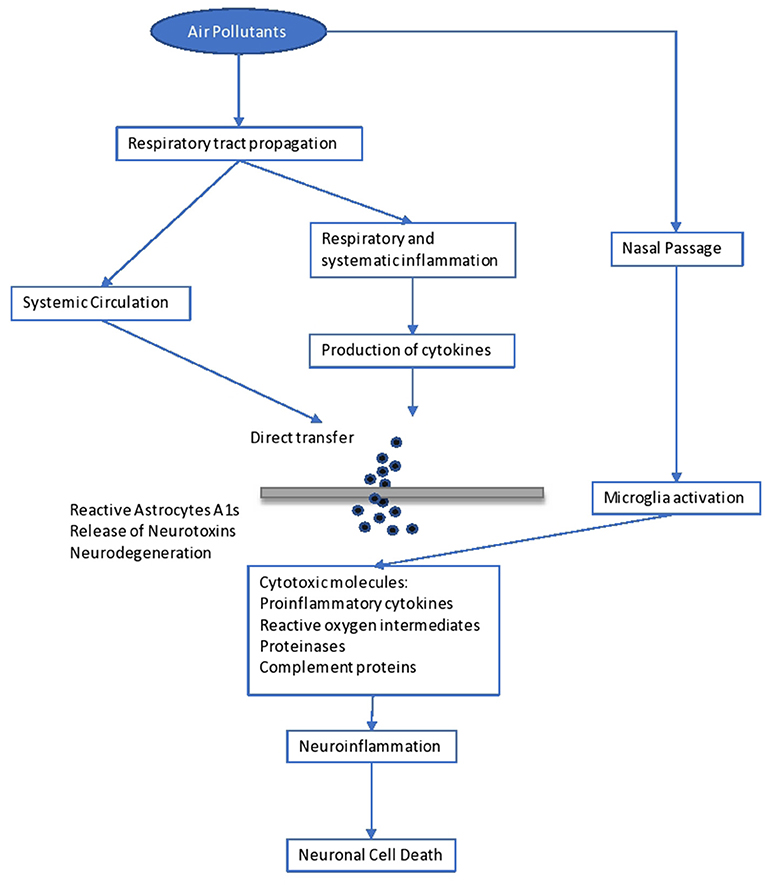Report on PM2.5 Toxicity and its Implications for Sustainable Development Goals
Introduction: Aligning Air Quality Management with Global Health Objectives (SDG 3)
Fine particulate matter (PM2.5) is a leading cause of premature mortality globally, posing a significant obstacle to achieving Sustainable Development Goal 3 (Good Health and Well-being), particularly Target 3.9, which aims to substantially reduce deaths and illnesses from hazardous chemicals and air pollution. Current air quality control strategies, which primarily focus on reducing the total mass of PM2.5, have yielded health benefits. However, emerging evidence indicates that not all particles are equally harmful. A more refined approach, accounting for the differential toxicity of PM2.5 from various emission sources, is necessary for more effective public health protection and accelerated progress towards the SDGs.
Unequal Toxicity of PM2.5 Sources: A Multi-Sectoral Challenge
An integrated assessment combining field measurements and air-quality modelling has revealed that the toxicity per unit mass of PM2.5 varies substantially, by up to two orders of magnitude, depending on its anthropogenic source. This finding has profound implications for several SDGs. The primary sources, ranked by descending order of cellular toxicity, are:
- Solid fuel combustion in residential stoves
- Metallurgy industry
- Brake wear
- Diesel vehicles
- Petrol vehicles
- Cement industry
- Power plants
Analysis of Emission Reduction Efforts in China (2005-2021) and SDG Linkages
An analysis of air quality policies in China from 2005 to 2021 demonstrates the importance of a toxicity-aware approach. While significant progress was made in reducing both total PM2.5 mass and toxicity-adjusted emissions, the sources of these reductions differed markedly.
- Mass Reduction vs. Toxicity Reduction: Industrial sources were the largest contributors to the overall reduction in PM2.5 mass emissions, accounting for 57.5% of the decrease.
- Dominance of Residential Sector in Health Impact: In contrast, the reduction in toxicity-adjusted emissions was overwhelmingly driven by the residential sector, which contributed approximately 80% of the improvement. This highlights a critical link between household energy use and public health.
Policy Implications for Advancing Sustainable Development
These findings underscore the need for clean air policies to integrate toxicity metrics, thereby creating synergies with multiple Sustainable Development Goals.
- SDG 7 (Affordable and Clean Energy): The highest toxicity is linked to residential solid fuel combustion. Policies promoting the transition to clean and affordable household energy (Target 7.1) are paramount for reducing the most severe health risks from air pollution.
- SDG 9 (Industry, Innovation, and Infrastructure) & SDG 11 (Sustainable Cities and Communities): Emissions from metallurgy, cement production, and vehicles (exhaust and non-exhaust) are significant toxicity contributors. Achieving Target 9.4 (upgrading infrastructure and retrofitting industries for sustainability) and Target 11.6 (reducing the adverse environmental impact of cities) requires regulations that specifically target the most toxic industrial and transport-related particles.
- SDG 12 (Responsible Consumption and Production): A toxicity-based framework supports a shift towards more sustainable production patterns by identifying and prioritizing the mitigation of industrial processes that generate the most harmful pollutants.
Conclusion and Recommendations for Future Policy
This study proposes a cellular toxicity-based framework to guide PM2.5 reduction strategies. Such an approach allows for the formulation of source-specific emission control regulations that can more efficiently address public health risks (SDG 3) in diverse regions. By focusing on the toxicity of emissions, policymakers can better align environmental protection with goals for clean energy (SDG 7), sustainable industry (SDG 9), and resilient cities (SDG 11). Further epidemiological research is required to validate these findings in relation to human health outcomes and to fully integrate this framework into public policy for sustainable development.
1. Which SDGs are addressed or connected to the issues highlighted in the article?
SDG 3: Good Health and Well-being
- The article directly addresses public health by focusing on the adverse effects of air pollution. It opens by stating that “Fine particulate matter (particulate matter with a diameter of 2.5 μm or less; PM2.5) causes millions of premature deaths globally”. This establishes a clear link to ensuring healthy lives and promoting well-being for all ages. The study’s goal to refine “air-pollution control strategies” to achieve “greater benefits” for health reinforces this connection.
SDG 7: Affordable and Clean Energy
- The article identifies “solid fuel combustion in residential stoves” as the source of PM2.5 with the “highest toxicity”. It also notes that the reduction in toxicity-adjusted emissions was primarily “driven by residential combustion (approximately 80%)”. This highlights the critical role of transitioning from polluting solid fuels to cleaner energy sources in households to mitigate health risks, which is a core objective of SDG 7.
SDG 9: Industry, Innovation, and Infrastructure
- The research analyzes emissions from various industrial sectors, including “the metallurgy industry,” “the cement industry and power plants.” It discusses how “industrial sources contributed 57.5% to the reduction in PM2.5 mass emissions” through clean-air policies. The call for “source-specific emission control regulations” points towards the need for upgrading industrial processes and infrastructure to be cleaner and more sustainable.
SDG 11: Sustainable Cities and Communities
- The article’s focus on air pollution and “population exposures in China” is directly related to the environmental quality of cities and human settlements. By analyzing source contributions and proposing a “cellular toxicity-based framework for PM2.5 reduction,” the study aims to address health risks in diverse regions, which is essential for making cities and communities inclusive, safe, resilient, and sustainable.
2. What specific targets under those SDGs can be identified based on the article’s content?
-
Target 3.9: By 2030, substantially reduce the number of deaths and illnesses from hazardous chemicals and air, water and soil pollution and contamination.
- The article’s entire premise is built around mitigating the health impacts of air pollution. The statement that PM2.5 “causes millions of premature deaths globally” directly aligns with the goal of reducing mortality from air pollution. The proposed framework aims to create more effective policies to reduce these specific health risks.
-
Target 7.1: By 2030, ensure universal access to affordable, reliable and modern energy services.
- The finding that “PM2.5 from solid fuel combustion in residential stoves had the highest toxicity” underscores the importance of this target. The significant reduction in toxicity-adjusted emissions driven by changes in “residential combustion” implies that moving away from solid fuels towards cleaner energy is a key strategy for achieving health benefits, linking directly to the adoption of modern energy.
-
Target 9.4: By 2030, upgrade infrastructure and retrofit industries to make them sustainable, with increased resource-use efficiency and greater adoption of clean and environmentally sound technologies and industrial processes…
- The article’s analysis of emissions from sources like the “metallurgy industry, … diesel vehicles, … the cement industry and power plants” and the call for “source-specific emission control regulations” connect directly to this target. It suggests that industries need to adopt cleaner technologies not just to reduce mass emissions but to specifically target the most toxic pollutants.
-
Target 11.6: By 2030, reduce the adverse per capita environmental impact of cities, including by paying special attention to air quality…
- The study focuses on air quality and “population exposures in China,” a key aspect of the environmental impact of cities. The research proposes a refined approach to “clean-air policies” by considering the toxicity of pollutants, which is a direct effort to improve air quality management and reduce the adverse health impacts on urban populations.
3. Are there any indicators mentioned or implied in the article that can be used to measure progress towards the identified targets?
-
Indicator 3.9.1: Mortality rate attributed to household and ambient air pollution.
- This indicator is implicitly central to the article. The opening sentence, “Fine particulate matter … causes millions of premature deaths globally,” directly refers to the mortality rate that this indicator tracks. The study’s purpose is to find better ways to reduce this health burden.
-
Indicator 11.6.2: Annual mean levels of fine particulate matter (e.g. PM2.5 and PM10) in cities (population weighted).
- The article is explicitly about “Fine particulate matter (particulate matter with a diameter of 2.5 μm or less; PM2.5)”. It analyzes the reduction of “PM2.5 mass” between 2005 and 2021 and discusses “population exposures in China,” making PM2.5 concentration a key metric throughout the study.
-
Proposed/Implied Indicator: Toxicity-Adjusted PM2.5 Emissions.
- The article’s main contribution is the proposal of a more sophisticated indicator beyond simple mass concentration. It argues that since “not all particles are equally harmful,” measuring “toxicity-adjusted PM2.5 emissions” or “relative-potency-adjusted emissions” would be more effective for public health policy. The study demonstrates this by showing that while industrial sources dominated the reduction in “PM2.5 mass,” the reduction in “relative potency-adjusted emissions was driven by residential combustion.” This suggests a new, more health-relevant indicator for tracking progress.
4. Create a table with three columns titled ‘SDGs, Targets and Indicators” to present the findings from analyzing the article. In this table, list the Sustainable Development Goals (SDGs), their corresponding targets, and the specific indicators identified in the article.
| SDGs | Targets | Indicators |
|---|---|---|
| SDG 3: Good Health and Well-being | Target 3.9: Substantially reduce deaths and illnesses from hazardous chemicals and air pollution. | Indicator 3.9.1: Mortality rate attributed to household and ambient air pollution (implied by the mention of “millions of premature deaths globally”). |
| SDG 7: Affordable and Clean Energy | Target 7.1: Ensure universal access to affordable, reliable and modern energy services. | Reduction in emissions from “solid fuel combustion in residential stoves” (a key source of high-toxicity PM2.5). |
| SDG 9: Industry, Innovation, and Infrastructure | Target 9.4: Upgrade infrastructure and retrofit industries to make them sustainable and clean. | Reduction in PM2.5 emissions from industrial sources (e.g., “metallurgy industry,” “cement industry,” “power plants”). |
| SDG 11: Sustainable Cities and Communities | Target 11.6: Reduce the adverse per capita environmental impact of cities, paying special attention to air quality. |
|
Source: nature.com







